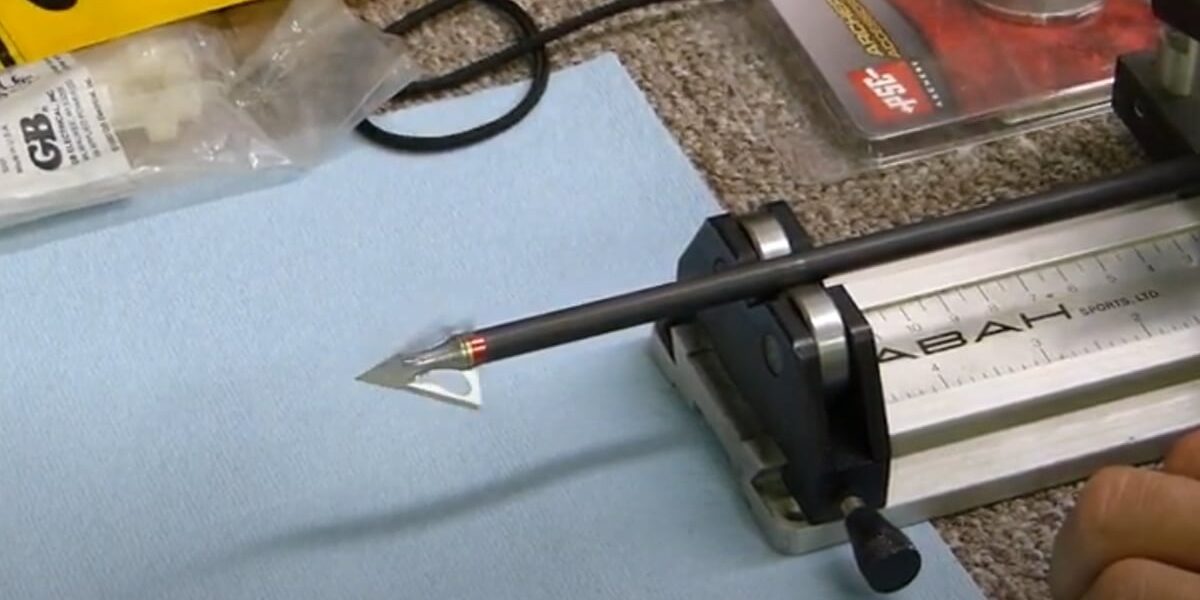There are a lot of different opinions out there on what should be used to screw on broadheads. Some people say that you should only use your fingers, while others say that you need to use a tool like a vise or a wrench. Personally, I think that it depends on the situation.
If you’re just screwing on one or two broadheads, then using your fingers is probably fine. But if you’re attaching a bunch of them to arrows or doing some other type of project where precision is important, then using a tool is probably the way to go.
There are a few different types of broadheads on the market, each with its own set of benefits. So, what should you use to screw on your broadheads? Some people swear by Teflon tape, while others prefer O-rings.
Personally, I think that using a good-quality thread locker is the best way to go. This will ensure that your broadheads are securely attached and won’t come loose during use. Whichever method you choose, just make sure that your broadheads are properly secured before heading out into the field.

HOW TO ALIGN BROADHEADS
How Do You Mount Broadheads?
If you’re a bowhunter, sooner or later you’re going to have to mount broadheads on your arrows. It’s not a difficult process, but there are a few things you need to know in order to do it correctly. Here’s a step-by-step guide to mounting broadheads on your arrows:
1. Start by choosing the right size of broadhead for your arrow shaft. The broadhead should be no more than 1/8″ wider than the shaft and no longer than 3″ from tip to ferrule.
2. Once you’ve selected the right size broadhead, use an adhesive such as super glue or epoxy to attach the broadhead to the arrow shaft. Make sure that the bond is strong and secure before proceeding.
3. Next, use a file or sharpening stone to bevel the leading edge of the broadhead so that it cuts easily through flesh and bone.
4. Finally, use a sharpie or other permanent marker to mark the trailing edge of the blade so that you can tell which way is up when you’re ready to shoot.
That’s it! You’re now ready to hunt with your newly mounted broadheads!
Should You Use Needle Nose Pliers Or Locking Pliers to Screw on Broadheads?
There are a few factors to consider when deciding whether to use needle nose pliers or locking pliers to screw on broadheads. The first is the size of the broadhead. If the broadhead is too large for the needle nose pliers, then you will need to use locking pliers.
The second factor is the type of material the broadhead is made from. If the broadhead is made from a softer metal, then you can probably get away with using needle nose pliers. However, if it is made from a harder metal, then you will need to use locking pliers so that you don’t damage the head.
Finally, you need to consider how much force you will need to apply in order to get the head screwed on tight enough. If you think you will need a lot of force, then it is probably best to go with locking pliers so that they don’t slip and cause injury.
Do You Need a Broadhead Wrench?
A broadhead wrench is a tool that can be used to remove and replace the blades on a broadhead. Broadheads are often used for hunting, and the blades can become dull or damaged over time. A broadhead wrench can be used to safely remove and replace the blades, without damaging the rest of the broadhead.
What Thread are Broadheads?
Broadheads are the cutting edges of an arrow that are typically attached to the shaft with screws. The two main types of broadheads are mechanical and fixed-blade broadheads. Mechanical broadheads have moveable blades that deploy when the arrow hits the target.
These types of broadheads are usually more accurate than fixed-blade broadheads because they offer a smaller profile while in flight. However, mechanical broadheads can be prone to failure if not properly maintained or if they get damaged during transport. Fixed-blade broadheads, on the other hand, have blades that are permanently attached to the shaft.
These types of broadheads typically offer more penetration than mechanical broadheads because the blades are always exposed. Fixed blade broadheads can also be easier to sharpen and don’t require as much maintenance as their mechanical counterparts.
Conclusion
There are a few things to consider when deciding what to use to screw on broadheads. The type of bow, the weight of the broadhead, and the size of the shaft are all factors that need to be considered. There are a few different types of screws that can be used, but the most common is the flat-head screw.
This type of screw will work with most bows and is easy to find at any hardware store.





